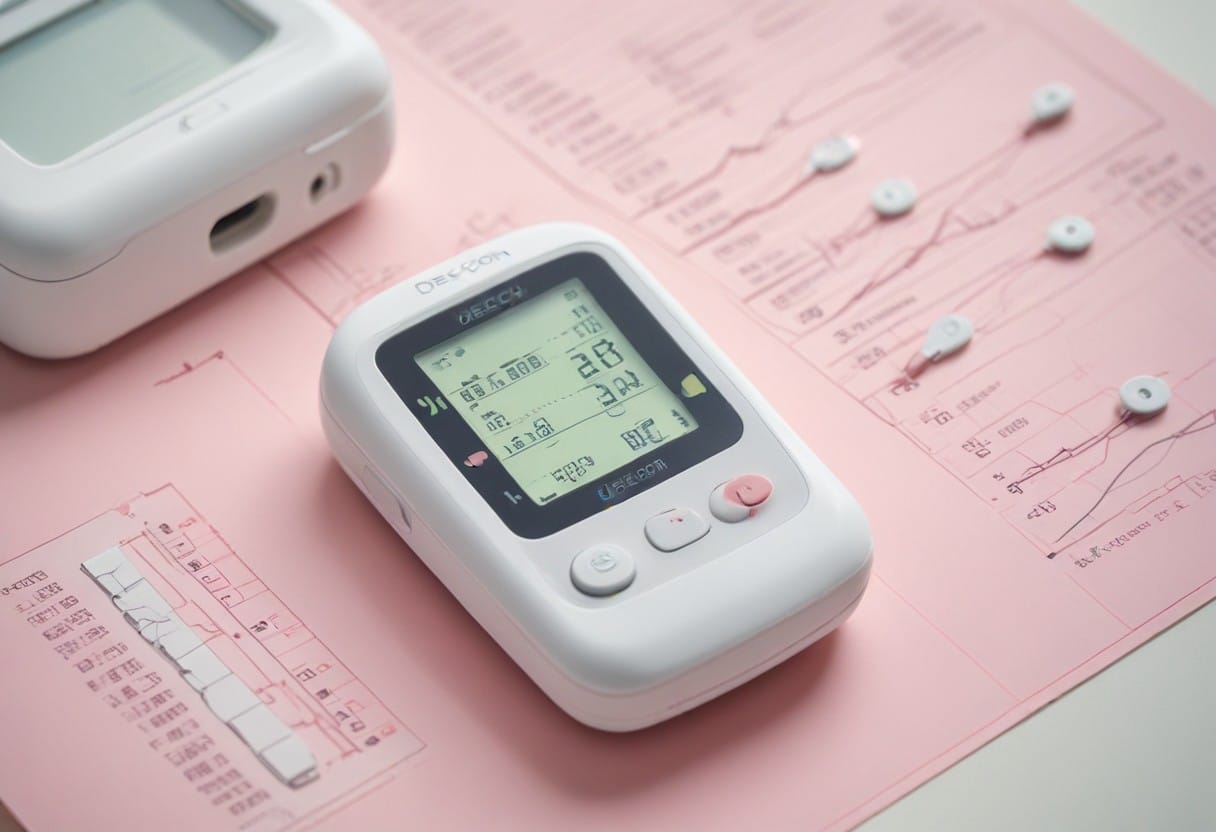The Dexcom G6 Transmitter is a groundbreaking tool that has completely changed how diabetes is managed. It offers continuous glucose monitoring (CGM) technology to help users track their blood glucose levels in real-time. Understanding the lifespan of the Dexcom G6 Transmitter and learning ways to extend it is crucial for maximizing its utility and cost-effectiveness. In this guide, we’ll explore the critical aspects of the Dexcom G6 Transmitter’s lifespan, offering insights and practical tips to help users make the most of this innovative technology.

Understanding the Dexcom G6 Transmitter Lifespan
The lifespan of a Dexcom G6 transmitter typically ranges from 3 to 6 months, depending on individual usage patterns and environmental conditions. Factors such as how often the transmitter is used, the level of physical activity of the user, and the storage conditions can all influence its longevity.
Factors Influencing Transmitter Lifespan:
- Usage Patterns: Transmitters used consistently for extended periods may wear out faster than those used intermittently.
- Environmental Conditions: Extreme temperatures or high humidity levels can influence the transmitter’s performance and longevity.
- Physical Activity: Users who engage in rigorous physical activities that may cause the transmitter to move or bend frequently may experience a shorter lifespan.
- Storage Conditions: You can extend the life of the transmitter by keeping it in a dry, cool place when not in use.
Common Reasons for Premature Transmitter Failure:
- Sensor Insertion Issues: Improper sensor insertion can lead to sensor errors, which may cause the transmitter to fail prematurely.
- Physical Damage: Accidental drops or bumps can damage the transmitter, affecting its functionality.
- Moisture Exposure: Exposure to moisture can cause the transmitter to malfunction or fail.
- Expired Warranty: Using the transmitter beyond its warranty period may increase the risk of failure.
How Long Does the Dexcom G6 Transmitter Last?
Manufacturer Specifications: According to Dexcom, the G6 transmitter is designed to last for up to 3 months from the first use. This duration is based on regular usage patterns, with the transmitter continuously transmitting glucose data to the receiver or compatible smart device.
Real-World User Experiences: While the manufacturer specifies a 3-month lifespan, real-world user experiences may vary. Some users have reported that their transmitters have lasted longer than three months, up to 4 or even six months, with consistent and careful use.
Variations in Longevity: Several factors can contribute to variations in the longevity of the Dexcom G6 transmitter. These include:
- Usage Patterns: Users who wear the sensor continuously without breaks may experience a shorter transmitter lifespan than those who take breaks between sensor wear.
- Environmental Conditions: Factors such as severe temperatures, high humidity, or water exposure can influence the efficiency and durability of the transmitter. It is usually advised to use and store such items in the climatic conditions stated by the manufacturer to maintain their longevity and best performance.
- Physical Activity: Users with high levels of physical activity may experience faster transmitter depletion due to the sensor’s movement and bending.
- Sensor Insertion: Proper insertion and maintenance of the sensor can contribute to a longer transmitter lifespan.

Signs Your Dexcom G6 Transmitter May Need Replacement
Identifying Key Indicators:
- Signal Strength: If the signal between the transmitter and the receiver or smart device starts to diminish, it could suggest that the transmitter is close to reaching its life expectancy.
- Inaccurate Readings: Persistent errors in glucose measurements, even post-calibration, may suggest a faulty transmitter.
- Sensor Errors: Frequent sensor errors, such as sensor failures or communication issues, may indicate transmitter failure.
- Battery Status: If the transmitter’s status indicates a low or depleted battery, it may be time to replace the transmitter.
Symptoms of Transmitter Failure:
- No Signal: Complete signal loss between the transmitter, receiver, or smart device.
- No Readings: The transmitter cannot send glucose measurements to the receiver or the smart device.
- Consistently Inaccurate Readings: Glucose readings that are consistently inaccurate or fluctuate widely without explanation.
- Sensor Errors: Persistent sensor errors cannot be resolved with sensor restarts or calibrations.
When to Seek a Replacement:
Do you notice any of the signs or symptoms above? In that case, it is advisable to contact Dexcom’s technical support or your healthcare provider for advice on replacing the transmitter. Dexcom might provide a replacement if the transmitter is still under warranty and fulfills the replacement criteria. Remember to keep your equipment in good operating order for the best results.
Tips for Extending the Lifespan of Your Dexcom G6 Transmitter
Proper Care and Maintenance Practices:
- Avoid Bending or Twisting: Handle the transmitter carefully to avoid bending or twisting, which can damage internal components.
- Keep It Dry: Do not expose the transmitter to dampness or water, which could damage it and shorten its lifespan.
- Clean Regularly: Gently wipe the transmitter with a moist cloth to eliminate dirt or debris hindering its performance.
- Avoid Extreme Temperatures: Keep the transmitter in a cool and dry location, away from direct sunlight and severe temperatures. This can help preserve its functionality and longevity.
Strategies for Optimizing Performance:
- Take Breaks Between Sensors: Take short breaks between sensor wear to allow the transmitter to rest and prevent overheating.
- Rotate Sensor Sites: Rotate the sensor placement to different locations on your body to reduce wear on a single area.
- Monitor Signal Strength: It’s important to consistently check the signal strength between the transmitter and the receiver or smart device to guarantee peak performance. This can help in the early detection of any potential issues and ensure smooth operation.
Storage, Cleaning, and Handling:
- Store Properly: To avoid potential damage, keep the transmitter in its original packaging or a protective casing when it’s not being used.
- Clean Carefully: Clean the transmitter with a mild soap and water solution, avoiding harsh chemicals that can damage the device.
- Handle with Care: Do not drop or improperly handle the transmitter, which could cause internal damage.
Real-User Insights & Reviews
Kerry Sayles Shared her beautiful experience:
Having Dexcom during my pregnancy was a blessing; it significantly simplified the process. Dealing with pregnancy sickness made managing my Type 1 diabetes more challenging, but Dexcom provided immense assistance. I felt like I had more control over my diabetes than ever before, thanks to the continuous glucose monitoring feature, which was a fantastic feature.
Rachael Marie Porter says:
I signed up for the free trial, which was a game-changer. Dexcom was easy to integrate into my demanding schedule as a working mother of two little children. I can’t express enough how much I love it and the immense benefits it has brought me. I recently advocated for receiving Dexcom through the NHS and was thrilled. It has improved accessibility and management of type 1 diabetes. I am grateful for the innovative technology you have developed.
AWESOME WORK DEXCOM!!
Review by Sam Yusuf:
Dexcom G6 has revolutionized my life. Previously, I was using Flash, which gave me a comprehensive view of my fluctuating readings, but I could take action once I swiped. I find Dexcom to be much more precise, and its overnight monitoring feature with alerts that wake me up at my chosen levels significantly improves my sleep quality. I opted for the trial month package to understand the difference, but even before the first month ended, I eagerly urged Dexcom to enroll me. My glucose levels, which used to fluctuate like a rollercoaster, are as steady as a bowling alley, with Dexcom as my bumper bar to keep me on track.
Troubleshooting Common Issues
Frequently Encountered Problems:
Signal Loss: If you’re experiencing signal loss between the transmitter and receiver or smart device, try moving closer to it. Signal loss can also result from obstructions or interference from other electronic devices.
Inaccurate Readings: If you’re getting consistently inaccurate readings, ensure that the sensor is inserted correctly and that the transmitter is securely attached to the sensor. Calibrating the sensor and checking for any physical damage to the transmitter can also help resolve this issue.
Sensor Errors: Sensor errors can occur due to issues with sensor insertion, signal interference, or transmitter malfunction. To resolve sensor errors, try restarting the sensor and ensuring proper placement.
Low Battery: If the transmitter battery is low, replace the transmitter following the manufacturer’s instructions.
Step-by-Step Guidance:
Check Signal Strength: Ensure that the transmitter is within range of the receiver or smart device and that there are no obstacles or interference causing signal loss.
Inspect Sensor and Transmitter: Regularly inspect the sensor and transmitter for any signs of physical damage or problems with positioning. Make sure that the transmitter is firmly connected to the sensor.
Calibrate the Sensor: If the readings appear inaccurate, adjust the sensor according to the manufacturer’s guidelines to guarantee precision.
Restart the Sensor: If you’re experiencing sensor errors, try restarting the sensor following the manufacturer’s guidelines.
Replace the Transmitter: If none of the above steps resolve the issue and the transmitter is nearing the end of its lifespan, it may be time to replace it.
Frequently Asked Questions (FAQs)
Q: How long does the Dexcom G6 transmitter last?
A: The Dexcom G6 transmitter is designed to last up to 3 months from the first use.
Q: What elements may impact the Dexcom G6 transmitter’s lifespan?
A: Usage patterns, environmental conditions, physical activity, and proper sensor insertion can all influence the transmitter’s longevity.
Q: How can I extend the lifespan of my Dexcom G6 transmitter?
A: Appropriate care and maintenance, including refraining from bending or twisting the device, ensuring it remains dry, and cleaning it regularly, can prolong its lifespan.
Q: What are the signs that my Dexcom G6 transmitter may need replacement?
A: Weak signal strength, inaccurate readings, sensor errors, and low battery status are indicators that the transmitter may need replacement.
Q: How can I troubleshoot common issues with my Dexcom G6 transmitter?
A: Troubleshooting steps include checking signal strength, inspecting the sensor and transmitter, calibrating the sensor, and restarting the sensor if necessary.
Q: Will it be possible to replace the Dexcom G6 transmitter myself?
A: Yes, you can replace the Dexcom G6 transmitter yourself, following the manufacturer’s instructions provided with the replacement transmitter.
Q: What is the recommended way to store my Dexcom G6 transmitter when it’s unused?
A: Keeping the transmitter in a cool and dry location is advised, away from severe temperatures and direct sunlight. Also, ensure that it is not exposed to moisture or water. This can help preserve its functionality and longevity.
Conclusion
In conclusion, the Dexcom G6 transmitter is a valuable tool for managing diabetes, providing continuous glucose monitoring that can significantly improve health outcomes. Understanding the device’s lifespan and adopting appropriate care and maintenance routines are crucial for extending its durability and guaranteeing precise glucose monitoring. Regular inspection, proper storage, and careful handling can significantly contribute to the effective operation of your device. Remember, your health and well-being should always be the top priority.
By following the tips and best practices outlined in this guide, you can extend the lifespan of your Dexcom G6 transmitter and minimize the risk of premature failure. Taking breaks between sensor wear, avoiding extreme temperatures, and handling the transmitter carefully can all contribute to its longevity.
We encourage all Dexcom G6 users to implement these suggestions and practices to get the most out of their devices. Regularly checking for signs of wear or damage, calibrating the sensor as needed, and storing the transmitter properly can help prolong its lifespan and ensure reliable performance.
In conclusion, proactive care and maintenance of your Dexcom G6 transmitter are crucial to maximizing its value and performance. By caring for your device correctly, you can enjoy accurate and reliable glucose monitoring for months.




